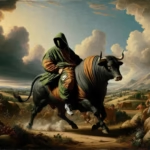The Impact of Old Workmanship on Current Advanced Plan
Workmanship has forever been an impression of society’s qualities, convictions, and culture. For a really long time, specialists have drawn from their general surroundings to convey thoughts, record history, and express inclination. This is as obvious today as it was in old times, with one outstanding contrast: innovation. While the medium has advanced from cave compositions and dirt tablets to pixels and code, the standards feel of antiquated workmanship actually impact present day computerized plan. The connection between old craftsmanship and contemporary plan is a perplexing one, established in immortal standards of variety, structure, imagery, and human articulation. Today, advanced plan — incorporating everything from site connection points to video game designs — keeps on acquiring intensely from antiquated craftsmanship customs, making these impacts more significant than any other time in recent memory.
The Ageless Components of Antiquated Workmanship
Old fine arts, whether from Mesopotamia, Egypt, Greece, or the Indus Valley, are portrayed by their utilization of imagery, mathematical examples, and a profound association with otherworldliness, nature, and day to day existence. These components are seen across different societies and time spans, yet their getting through allure and appropriateness have risen above hundreds of years. Here are a portion of the vital highlights of old workmanship that have been embraced or adjusted in current computerized plan.
1. Mathematical Shapes and Examples
The old world had a significant comprehension of math, as found in the mosaics, stoneware, and design of civic establishments like Egypt, Greece, and Rome. The utilization of straightforward shapes — circles, triangles, and squares — was utilitarian as well as emblematic. For instance, in Old Greece, the brilliant proportion, a numerical extent, was utilized to accomplish tastefully satisfying organizations in figure and engineering. This numerical way to deal with equilibrium, extent, concordance actually assumes a basic part in present day plan, especially in UI (UI) and client experience (UX) plan. The format of computerized content, whether it’s a site or an application, frequently depends on matrices and mathematical arrangement to make an outwardly fulfilling and productive client experience.
Computerized originators today use mathematical structures to work on complex plans, similar as antiquated craftsmen did. Computerized plan frequently utilizes moderate styles with rehashing mathematical shapes, motivated by antiquated mosaic works and compositional components like the Parthenon or the pyramids of Egypt.
2. Evenness and Equilibrium
In old workmanship, balance was an expressive decision, yet an impression of the universe, the heavenly, or the request for the universe. From the complicated, even plans of Islamic craftsmanship to the decent extents of Greek sanctuaries, balance is an ongoing idea that ties numerous old fine arts together. Current advanced plan keeps on focusing on balance, particularly with regards to web formats and versatile connection points, as clients will quite often connect more with stylishly adjusted visuals.
An even format makes concordance between visual components and upgrades the client’s general insight. Planners of sites, logos, and computerized craftsmanship depend on evenness and adjust to make satisfying and coordinated spaces. For example, network frameworks, which are established in old building configuration, are presently utilized in current site design to keep up with arrangement and guarantee that components like pictures, message, and symbols are relatively disseminated. These standards guarantee that the watcher’s eye is directed normally across the page or screen, making route natural.
3. Imagery and Iconography
Quite possibly of the most significant association between old craftsmanship and current advanced plan is the utilization of images and symbols. Antiquated craftsmanship, particularly from societies like Egypt, Greece, and Rome, was loaded up with strong images that conveyed more profound implications. From the Egyptian ankh representing life to the Greek maze addressing intricacy or the Celtic bunch addressing time everlasting, antiquated images were utilized to convey thoughts that rose above language.
In present day computerized plan, symbols assume a comparative part, consolidating complex thoughts into generally figured out visual shorthand. Whether it’s the Wi-Fi symbol, the shopping basket, or the burger menu, these images convey implications that are right away conspicuous to clients around the world. The ascent of level plan and material plan has additionally built up the significance of rearranged, significant images, which, similar as old workmanship, impart messages productively and successfully.
4. Variety and Feeling
Antiquated human advancements were profoundly receptive to the close to home and otherworldly force of variety. In Egyptian burial places, for instance, variety was utilized to connote status, riches, and heavenly association. The rich golds, blues, and reds in Roman and Byzantine mosaics conveyed excellence, yet in addition otherworldly importance. Also, old Greek earthenware frequently utilized obvious differentiations of dark and red to represent balance between alternate extremes, like life and passing.
In current computerized plan, variety keeps on being a basic part, summoning mental reactions and making profound associations. The utilization of variety in website architecture, marking, and promoting is painstakingly thought of, frequently drawn from the very mental rules that directed antiquated craftsmen. Red, for example, is utilized to make criticalness, while blue is quieting and dependable, reflecting how old societies figured out the force of variety in correspondence.
Present day Advanced Plan Practices Roused by Antiquated Workmanship
1. Client Focused Plan and Narrating
Numerous antiquated craftsmanships, from cave artworks to the amazing models of Mesopotamian rulers, recount stories. They frequently portray divine beings, legends, or critical verifiable occasions, bringing the watcher into a story. In the cutting edge computerized scene, narrating is essential in drawing in crowds. Sites, applications, and commercials all depend on a story structure that directs the client’s insight, similar as old craftsmanship did in conveying fantasies and legends.
This act of narrating in computerized plan makes a profound association among clients and content. For instance, sites with clear visual orders and a “story” structure empower clients to explore through data without any problem. Current marking and computerized content creation, whether it’s through virtual entertainment posts or limited time recordings, frequently utilize visual narrating procedures that draw on the visual language and imagery of antiquated workmanship.
2. The Recovery of Old style Subjects in Plan
The impact of old style workmanship on current plan is maybe most obvious in the domain of logo plan. Numerous contemporary brands have integrated traditional plan components, like sections, shrub wreaths, or adapted Greek and Roman text styles, into their marking. These logos convey with them a feeling of immortality and authority, summoning the loftiness of old civilizations. The utilization of old style themes assists brands with taking advantage of an aggregate social memory, causing their logos to show up more honorable and persevering.
Essentially, numerous computerized artistic expressions, for example, computer game plan, film, and liveliness frequently get from old engineering and model to establish vivid conditions. Computer game establishments like Professional killer’s Statement of faith and Burial place Bandit utilize old social style to fabricate itemized, credible universes, permitting players to investigate antiquated ruins or reproduce authentic encounters.
End
The impact of antiquated workmanship on present day advanced plan is significant and persevering. Old societies abandoned a rich tradition of visual components — mathematical examples, equilibrium, imagery, and variety — that keep on reverberating with contemporary fashioners. From UIs to marking, the ageless standards of old workmanship keep on forming how we experience and collaborate with advanced media. As innovation advances and configuration patterns develop, these old roots act as a wake up call of the all inclusive human longing for magnificence, congruity, and significant articulation. The extension between old workmanship and current computerized plan isn’t just a verifiable one yet in addition a no nonsense association that improves our advanced encounters today.



